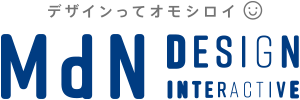Sociomedia UX Strategy Forum 2015 Summer
July 15-16, 2015. at Station Conference Manseibashi(Chiyoda-ku, Tokyo)
Sociomedia UX Strategy Forum 2015 Summer will be our second forum this year. The central focus of this forum is “Bases of the Methods.” Welcoming six domestic and foreign UX experts as guest speakers, we will take a look at UX strategy from diverse perspectives; through presentations on UX design, methods and underlying concepts, case studies, and panel discussions. Join our two-day experience for an in-depth tour of UX design and research trends, and gain insight on the future direction of UX strategy.
Event Details
Date
- Day 1:
July 15 (Wed), 2015. 1:00 - 9:00 PM
(Doors open at 12:30 PM, reception party from 7:00 – 9:00 PM) - Day 2:
July 16 (Thu), 2015. 9:30 AM – 4:40 PM
(Doors open at 9:00 AM, lunch from 11:50 AM – 12:50 PM)
Place
Station Conference Manseibashi
(JR Kanda Manseibashi building 4F. 1-25 Kanda Suda-cho, Chiyoda-ku, Tokyo, Japan)
Target Audience
Business leaders, managers / executives of organizations dealing with products and services, and people interested in organizational implementation of UX
Capacity
100 people for each day (Registration will close when the limit is reached)
Fee
If you register by June 30, you will get 20% early-bird discount for each of the tickets below. We offer additional privileges for people who have previously participated in our UX Strategy Forums (you will receive an e-mail from us regarding details).
| July 15-16 Two-day ticket (includes reception party on 15 and lunch on 16) | 64,000 yen (Early Bird) 80,000 yen |
|---|---|
| July 15 One-day ticket (reception party included) | 40,000 yen(Early Bird) 50,000 yen |
| July 15 One-day ticket (NO reception party) | 36,000 yen(Early Bird) 45,000 yen |
| July 16 One-day ticket (lunch included) | 40,000 yen(Early Bird) 50,000 yen |
Organizer
Sociomedia, Inc.
Program
Simultaneous translation (English to Japanese and Japanese to English) will be provided
Day 1: July 15 (Wed.)
-
12:30 PMDoors open
-
1:00 - 1:10 PMOpening Remarks from Program Chair
-
The Architecture of Understanding
If we hope to move forward, the UX community must go deep. We’ve been seduced by surface at the expense of understanding. We think we’re designing software, websites, and experiences. But we’re not. We are agents of change.
Until we accept this mission, we will forever repeat our mistakes. How can we work together when we’re divided by silos? How will we innovate while blinded by cultural illiteracy? The things we make are reflections of the language we use and the ways we organize ourselves.
In this spirited tour of information architecture, organizational strategy, and systems thinking, Peter Morville draws from his new book, Intertwingled, to reveal how everything is connected from code to culture. It’s a trip into the wilderness of cognition and complexity that delivers a simple message: the UX community can change the world, but only if we have the courage to go deep.
-
The Firma Model
The complexity that arises from understanding design problems as a part of our social fabric poses many challenges to human-centered design. Is understanding users and their context of use enough? How do we ensure that all stakeholder needs across ecosystems are accounted for? How do we ensure these needs are harmoniously reconciled in our design strategy? And how do we measure and critique our designs in this broader context?
In this talk the theory of the Firma Model will be shared to demonstrate how it has been designed to address these, and other, critical questions that challenge human-centered design practice.
-
Reducing Design Entropy
Activities of design are a battle against entropy. When an organization tries to develop a large-scale system, passive compromises increase the entropies at an exponential rate through the complicated procedures. The power of design, therefore, lies in the purity of the original concept and the ability to keep that purity level as high as possible - reducing design entropy - to the end of the process.
However, redundancy of design process, which is known as user-centered design, does not solve this problem because it forces the project to sub-optimize the system from the perspective of functions or tasks.
Especially on visionary services under push strategies, the goal should be to bring qualitative shifts in user's life or work and to make people to create their own meaning spaces by interacting with the high purity designs.
This session focuses on the practical methods of reducing design entropies at each stage of system development.
-
Strategy & Structure Doing It Right, and How You’d Know
There is no correct way to architect information; no tried-and-true formula for identifying and ultimately selecting the appropriate structures to realize business strategy while fostering great experiences and supporting the goals of customers and users. But there are good ways.
This presentation proposes four steps any practitioner can walk on the path toward aligning strategy with structure, using analogies from architecture in the built environment to assist attendees in understanding the range of what’s possible in order to arrive at what's good.
-
Issues and the future of UX
Now the term UX is widely used without any common clear definition. My idea is based on 'ISO/IEC 25010' and the 'UX White Paper' and key points are 1. UX includes both subjective quality characteristics of artifacts as well as objective quality characteristics, 2. UX extends for a long time before and after the purchase/acquisition of the artifact. Currently the word UX is apt to be used for the purpose of increasing the sales by boosting up attractive aspects especially by marketing people and designers. But the most important point lies in the satisfaction on the side of users for a long time of artifact lifecycle.
I wish to have a wide feedback to my presentation.
-
7:00 - 9:00 PMReception Party(Socializing with speakers / presentation from the sponsor corporations.)
Day 2: July 16 (Thu.)
-
9:00 AMDoors open
-
9:30 - 9:40 AMOpening Remarks from Program Chair
-
UX career path: IA + DataViz + Analytics = Change Agent
UX practitioners use their knowledge, expertise and technique to understand customers and design their experience, but how do business experts know how much they should invest on UX? How do we strike a balance between customer experience and business needs? How does UX contribute to business results?
Mr. Shimizu will share what he have learned through his 15-year journey in the field, working for eight companies in different industries, from start-ups to big brand names, in the U.S as well as in Japan. The presentation will offer practical tips for UX practitioners to step up the game.
-
The Application of the Firma ModelHaving established the theoretical context of the Firma Model, its application will now be explored in design practice, education, self-reflection and ongoing research.
- Its use in practice will be shared through a case study of designing a solution for small-scale, urban farmers in Soweto (a township on the outskirts of Johannesburg, South Africa).
- Its use in education will be shared through examples of 4th year interaction design students use of the model to document problem-ecologies.
- Its use in self-reflection will be demonstrated by using the Model to design a persona of yourself
- And lastly, a taxonomy and mapping of research and design methods into the model will be shared
-
11:50 AM - 12:50 PMLunch (a lunch box comes with the ticket)
-
12:50 - 1:00 PMA brief information about Sociomedia UX Strategy Forum Toshikazu Shinohara (President, Sociomedia, Inc.)
-
Is A Difference in Scale A Difference In Kind? Case Study From Our Clients
People don’t always know what they want. Almost always they want more from the project than their budgets would seem to allow, and in my experience there’s often a correlation between clarity of project goals and reliability of project budgets.
The evidence to support my assertion: two case studies that exemplify the correlation between clarity of intent and reliability of budget. Both projects began with vague and exciting goals for total business transformation, and soaring visions of large scale strategic re-invention. And then due to unforeseen (but not unforeseen-able) circumstances, both projects were rapidly re-cast quite specifically as smaller- scale tactical optimizations. In both cases, dramatic reductions in project scale demanded fundamental shifts in the kinds of thinking and making that followed.
I’ll share stories from each project and some preliminary lessons in intention modeling and expectation management that I learned along the way.
-
Strategy, Structure, and the Architecture of Experience
In this colorful conversation, Peter Morville draws upon 20 years of experience as an information architect to illustrate the past, present, and future of the practice.
His stories about working with AT&T, Cisco, Harvard, Macy's, the Library of Congress, the National Cancer Institute, Polar Bears International, and Vodafone reveal ideas and insights at the crossroads of information architecture, organizational strategy, and systems thinking.
Don't miss this rare opportunity to go behind the scenes with one of the world's most experienced information architects.
-
3:25 - 4:40 PMPanel Discussion
"UX methods and the future, asking to UX experts"Panelists: Peter Morville, Dan Klyn, Jason Hobbs, Masaaki Kurosu, Makoto Shimizu, Manabu Ueno
Moderator: Toshikazu Shinohara
Graphic recorder: Azumi Wada (DeNA Travel Co.,Ltd.)
Speakers
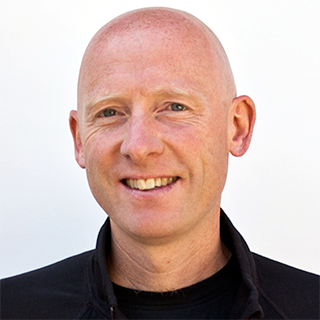 Peter Morville
Peter Morville-
Peter Morville (@morville) is a pioneer of the fields of information architecture and user experience. His best-selling books include Information Architecture for the World Wide Web, Ambient Findability, Search Patterns and Intertwingled (2014). He advises such clients as AT&T, Cisco, Harvard, IBM, Macy’s, the Library of Congress, and the National Cancer Institute.
His work has been covered by Business Week, The Economist, NPR, and The Wall Street Journal. Peter lives in Ann Arbor, Michigan with his wife, two daughters, and a dog named Knowsy.
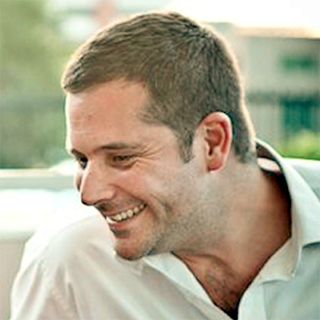 Jason Hobbs
Jason Hobbs-
Jason has been practicing design since 1997 with a focus on information architecture and human centered design. He is based in Johannesburg, South Africa.
His career has spanned agencies, working client-side, at start-ups and running his own businesses. His work has covered multiple industry sectors both locally and internationally including government, not-for-profit, arts and culture.
In addition to his design practice he lectures part time at the University of Johannesburg in user experience and service design, writes and publishes academically through the same institution and works to grow his community through the SA UX Forum and speaking at conferences internationally. www.jh-01.com
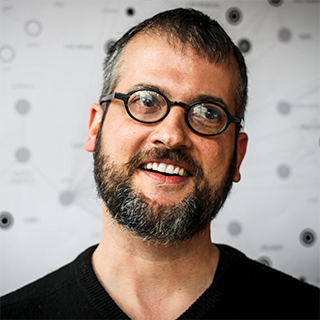 Dan Klyn
Dan Klyn-
Dan Klyn has accrued 18 years of experience in information architecture practice, and is cofounder of The Understanding Group (TUG).
He's interested in planning, strategy and architecture for places made of information, likes coffee an awful lot, and teaches information architecture at the University of Michigan School of Information.
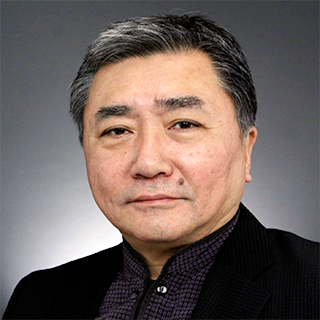 Masaaki Kurosu
Masaaki Kurosu-
Masaaki Kurosu is a professor at the Open University of Japan, since 2009. He was a President of HCD-Net (Human Centered Design Network) for 10 years. Based on his career as a usability professional in industry and academia, he has proposed the concept of User Engineering and the AES (Artifact Evolution Studies).
Before coming to NIME (National Institute of Multimedia Education) that was consolidated to the Open University of Japan in 2009, he was a professor at the faculty of informatics of Shizuoka university. He was formerly working for Hitachi Ltd. at the Design Center and the Central Research Laboratory where he was engaged in the development of the Japanese text input method, LISP programming environment and the interaction design methodology. He graduated the doctoral course of psychology at Waseda university.
He served as a conference chair of APCHI98, INTERACT2001 and ICHCI2009,2011,2013,2014,and 2015. He was a Japanese delegate of IFIP/TC13, and ISO TC159/SC4/WG6. He is a member of ACM SIGCHI, IEEE Computer Society, Human Interface Society (Japan), Japanese Psychological Association, Japan Ergonomics Society, Japan Society of Kansei Engineering and Japanese Association of Qualitative Psychology.
He is an author or a contributor of 50 books including "Introduction to Human Centered Design", "Human Computer Interface", "Introduction to ISO13407", and "Introduction to the User Engineering". His book list can be found at http://user-engineering.net/masaaki/Books.html
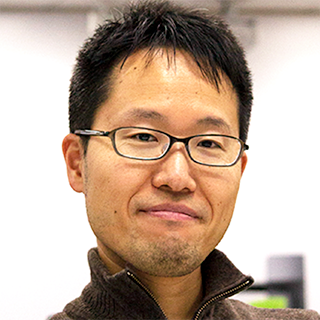 Makoto Shimizu
Makoto Shimizu-
Makoto Shimizu is a Chief Analytics Officer at Dentsu-Razorfish, and carries over 20 years of user experience and digital marketing. He provides strategic digital marketing expertise, guidance, and recommendations to his team and his clients.
Previously at Adobe in Utah, he contributed to product management and evangelism of Adobe Analytics (SiteCatalyst). Prior to that, at Rakuten, he had built up an analytics team to inform and advise internal 3,000+ marketers with data to help achieve their business goals.
He holds a Bachelor of Liberal Arts in Educational Technology from International Christian University.
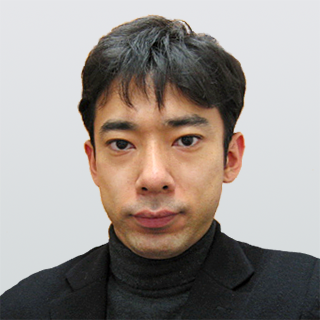 Manabu Ueno
Manabu Ueno-
Executive, Sociomedia, Inc.
UX design consultant, interaction designer, user interface designer, graphic designer, usability engineer, and programmer, Ueno has extensive experiences at web applications, mobile applications, desktop applications, business applications, etc., and takes a leading role in developing the design consulting methods at Sociomedia. He has also published many books including the Japanese translation of "Designing Interface".
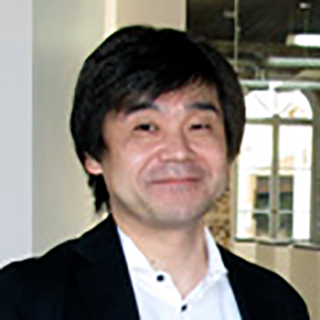 Toshikazu Shinohara
Toshikazu Shinohara-
President, Sociomedia, Inc.
Shinohara leads Sociomedia, the User Experience Design Consulting company. Shinohara himself is focusing on UX strategy consulting for innovation in organizations, using his experience in consulting for organizations/teams, IT-startup, and his specialties’ in UX, IT, and design.
Organizing "DESIGN IT! Conference / Forum / magazine" which inquires design and IT from 2005, and "UX Strategy Forum" which tries to find ways to put UX in the center of the organization strategy from 2014. He is trying to make Japanese UX market larger, by introducing newest ways and researches in the Western countries.
He is also a trustee of NPO "Human Centered Design Organization", president of UXPA Japan. His newest translation work is "Measuring the User Experience -Collecting, Analyzing, and Presenting Usability Metrics" (2014).
Sponsors
Media Partners
Wanted: Corporate Sponsors
Benefits for sponsors
- 20 minute presentation time during the party on the 15th or lunch time on the 16th
- Free two-day tickets for 6 persons
- Media promotion etc.
Fee
- To be negotiated
Questions and applications
- Please contact us by email at:
event@sociomedia.co.jp
Sociomedia is also offering two in-house lectures and workshops (Tuesday, July 14) conducted by the UX Strategy Forum guest speakers from abroad (limited to two companies / organizations).
Details as follows
- The 3 foreign guests will provide lectures and workshops at your company / organization
- Course A: morning lecture and afternoon workshop
- Course B: morning workshop and afternoon lecture
- Lecture and workshop materials (data) will be issued
- Consecutive interpreter will attend
Fee
- Sociomedia will provide an estimate based on your requests
Questions and applications
- Please contact us by email at:
event@sociomedia.co.jp












